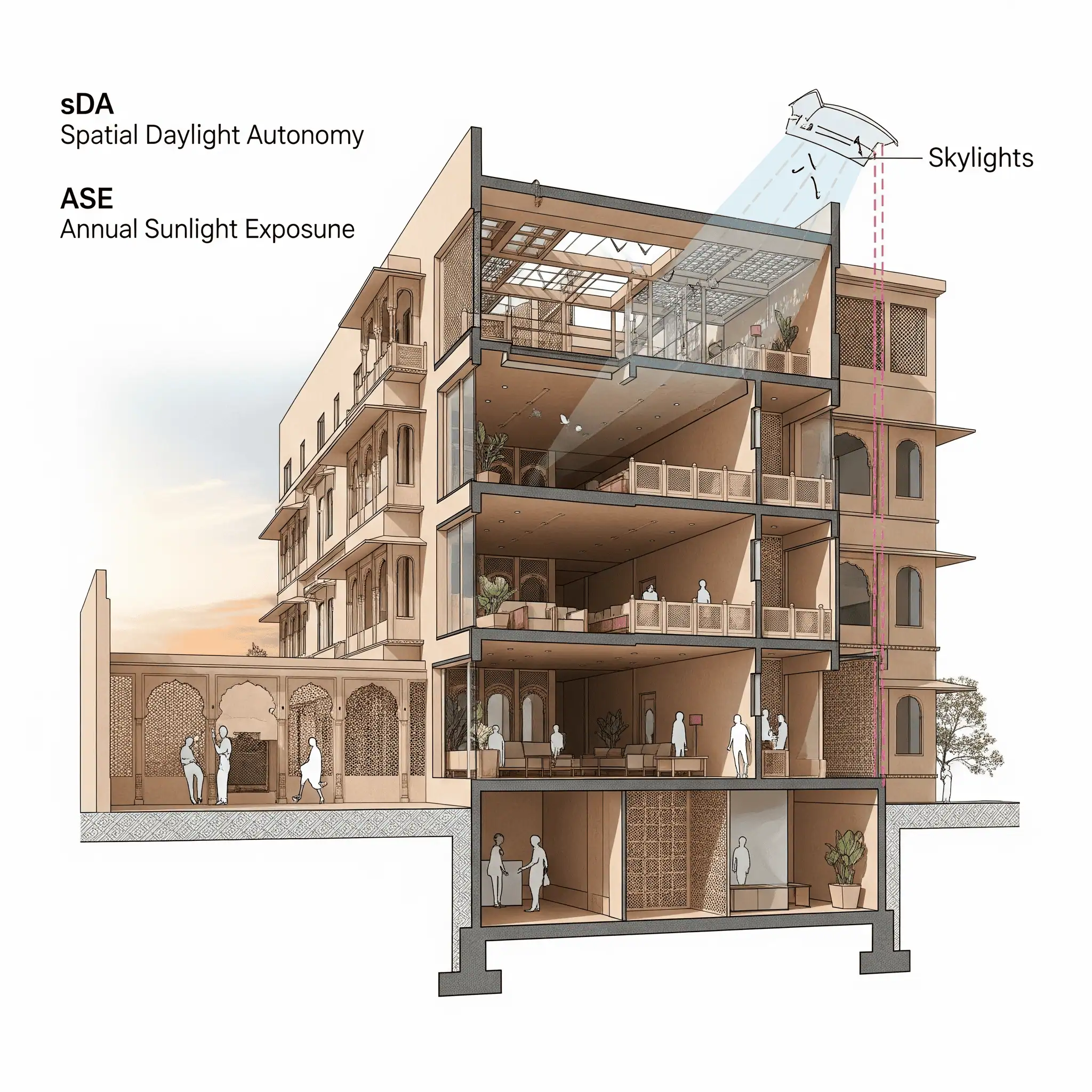Understanding Daylighting Metrics (sDA, ASE) & Skylights for Green Buildings in India
Natural light is more than just a design element — it plays a vital role in improving energy efficiency, enhancing indoor comfort, and reducing electricity bills. In Karnataka’s fast-evolving urban spaces, skylights are becoming an essential feature for homes and buildings that aim to be both beautiful and sustainable.
But how can you measure whether your space is getting enough natural light — or too much of it? That’s where daylighting metrics like sDA and ASE come into play.

What Are Daylighting Metrics?
In simple terms, daylighting metrics help us understand how well natural light is used inside a building — and whether it’s helping or hurting your comfort and energy usage.
1. sDA (Spatial Daylight Autonomy)
What it means: It measures how much of your room gets enough daylight (usually 300 lux or more) for at least 50% of daylight hours in a year.
Why it matters: A higher sDA means you can rely more on natural sunlight during the day — lowering your need for artificial lights.
In homes across Karnataka — from Bengaluru to Mysuru — high sDA means brighter, more cheerful spaces and better energy savings.
2. ASE (Annual Sunlight Exposure)
What it means: ASE measures areas that get too much sunlight (more than 1000 lux for over 250 hours in a year).
Why it matters: High ASE could cause discomfort, glare, or overheating — especially during hot summers in cities like Hubli or Bellary.
Why Skylights Are Perfect for Green Buildings in Karnataka
✅ Lower Electricity Bills
Skylights cut down the need for artificial lighting during the day — a big plus in areas that face frequent power cuts or where daylight hours are long.
✅ Better Ventilation & Comfort
Skylights can also be designed to open for natural ventilation — reducing the need for fans and air-conditioning.
✅ Healthier Indoor Environments
Natural daylight supports better mood, sleep, and productivity — crucial for homes, offices, and even schools in Karnataka’s growing urban zones.
Smart Skylight Design = Better Daylight Metrics
To balance sDA and ASE effectively, it’s important to:
Use UV-treated or Low-E glass to reduce heat.
Choose diffused glazing to spread light evenly.
Install ventilated skylights for hot climates.
Run daylight simulation studies before placement (our team can help with that!).
UrbanSkyLight’s skylights are specifically designed for Indian weather conditions — offering both modern aesthetics and thermal comfort suited to the climate of Karnataka.
Real Use Cases in Karnataka
Whether it’s a villa in Whitefield (Bangalore), a resort in Coorg, or an office in Mangalore — skylights work brilliantly for:
Central stairwells
Living rooms with high ceilings
Kitchens and pooja rooms needing natural light
Commercial atriums and studio spaces
Want to Explore Skylight Types for Your Project?
From fixed to walk-on, from sloped glass to motorized smart skylights, we offer complete solutions for residential and commercial use. 👉 Explore all our Skylight Solutions here »
Let’s Build Bright, Sustainable Spaces Together
At UrbanSkyLight, we specialize in end-to-end skylight solutions for homes and buildings across Karnataka. Our systems help improve daylight performance, meet green building standards, and create visually stunning spaces.
Need help choosing the right skylight or evaluating daylighting for your project?
📍 We serve all major cities in Karnataka — including Bangalore, Mysore, Mangalore, Hubballi, Belagavi, and more.


